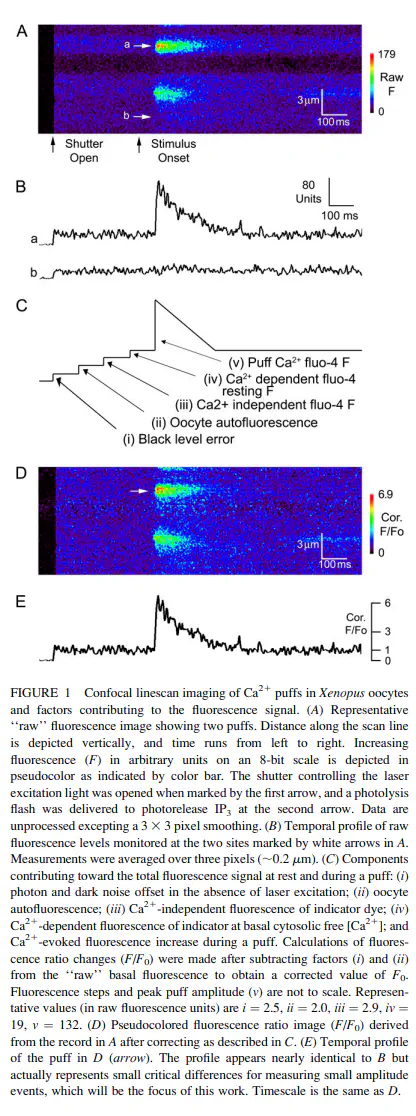
Abstract
The liberation of calcium ions sequestered in the endoplasmic reticulum through inositol 1,4,5-trisphosphate receptors/channels (IP(3)Rs) results in a spatiotemporal hierarchy of calcium signaling events that range from single-channel openings to local Ca(2+) puffs believed to arise from several to tens of clustered IP(3)Rs to global calcium waves. Using high-resolution confocal linescan imaging and a sensitive Ca(2+) indicator dye (fluo-4-dextran), we show that puffs are often preceded by small, transient Ca(2+) elevations that we christen “trigger events”. The magnitude of triggers is consistent with their arising from the opening of a single IP(3) receptor/channel, and we propose that they initiate puffs by recruiting neighboring IP(3)Rs within the cluster by a regenerative process of Ca(2+)-induced Ca(2+) release. Puff amplitudes (fluorescence ratio change) are on average approximately 6 times greater than that of the triggers, suggesting that at least six IP(3)Rs may simultaneously be open during a puff. Trigger events have average durations of approximately 12 ms, as compared to 19 ms for the mean rise time of puffs, and their spatial extent is approximately 3 times smaller than puffs (respective widths at half peak amplitude 0.6 and 1.6 micro m). All these parameters were relatively independent of IP(3) concentration, although the proportion of puffs showing resolved triggers was greatest (approximately 80%) at low [IP(3)]. Because Ca(2+) puffs constitute the building blocks from which cellular IP(3)-mediated Ca(2+) signals are constructed, the events that initiate them are likely to be of fundamental importance for cell signaling. Moreover, the trigger events provide a useful yardstick by which to derive information regarding the number and spatial arrangement of IP(3)Rs within clusters.